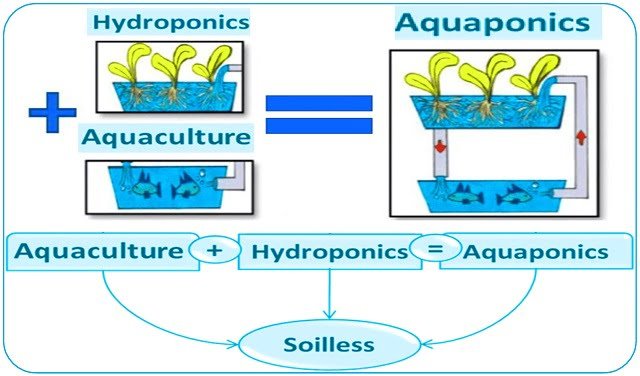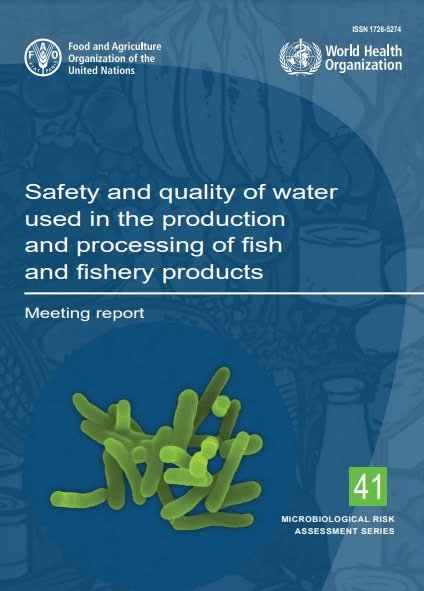Aquaculture effluents and sludge contain enormous amounts of nitrogenous substances, solids, and nutrients that can degrade the aquatic environment.
To utilize the accumulated sediments and nutrients from aquaculture sludge, biofloc technology and suspended growth biological reactors are used.
Scientists from ICAR-Central Institute of Fisheries Education and ICAR-CIFE optimized the parameters of sludge processing using a bioreactor, enabling water reuse and the conversion of sludge into biofloc protein.
They also studied the best combination of nutrients that could produce nutritious biofloc, which can be used for the feeding of aquatic animals.
In situ and ex situ Biofloc
There are two main types of biofloc technology: in situ and ex situ.
In situ: biofloc develops within the fish or shrimp culture system.
Ex situ: biofloc is produced in a system that is separate from the fish or shrimp culture unit.
In ex situ biofloc systems (bioreactor), the cultivation conditions for biofloc production can be monitored, the nutritional composition of biofloc can be improved through the regulation of microbial populations, and better control over C/N adjustments, biofloc formation prediction, and electricity supply disruption risk reduction can be achieved.
Stay Always Informed
Join our communities to instantly receive the most important news, reports, and analysis from the aquaculture industry.
Biofloc meal produced in either system can be used as an ingredient in aquaculture feed formulations.
Biofloc Production in Bioreactor
Ex situ biofloc production in a bioreactor allows for better control of turbidity, oxygenation, and the production of microbial protein. Aeration can be alternately supplied to enhance nitrification and denitrification processes.
The floc formation in a bioreactor is controlled by various provided parameters such as sludge quantity, aeration period, agitation frequency, sludge retention time, and the quantity and quality of additives used.
Hence, the optimization of various physicochemical parameters within the bioreactor is crucial to obtain the appropriate nutritional quality in ex situ-produced biofloc.
Employed Treatments
For the study, the scientists utilized two cylindrical bioreactors with a working volume of 500 liters each. Each bioreactor has two chambers, where the outer chamber is filled with water to cool the inner chamber, which is where the actual biofloc production takes place.
In addition, they employed a factorial design of independent variables such as sludge quantity (20 and 30 g/L), carbon/nitrogen ratio (15:1 and 20:1), and cationic starch as a bioflocculant at doses of 30 and 60 ppm.
Key Findings
“The percentage of crude protein and crude lipid in biofloc was significantly influenced by the interaction between carbon/nitrogen ratio and bioflocculant dose, as well as the interaction between sludge quantity, carbon/nitrogen ratio, and bioflocculant dose,” they report.
On the other hand, according to the study’s results, the volume of floc did not show significant influence from the interaction between carbon/nitrogen ratio and bioflocculant dose.
“The optimized parameters were 30 g/L of sludge, a carbon/nitrogen ratio of 20:1, and 30 ppm of cationic starch, resulting in a maximum crude protein content of 27.09%, a maximum crude lipid content of 4.36%, and a maximum floc volume of 132 ml/L,” they report.
According to the principal component analysis (PCA), the scientists found two main components:
PC1: Nutritional factors determining the nutritional composition of biofloc.
PC2: Nitrification factors necessary for biofloc formation.
The researchers describe that these two main components account for 85% of the total data variation.
Conclusion
“Using a separate biofloc reactor is beneficial when considering the disadvantages of the in situ biofloc system,” they conclude.
The scientists highlight that biofloc can be produced in a short period of time in the bioreactor compared to production in an in situ biofloc system.
Finally, they emphasize the production of nutritious biofloc in a bioreactor using waste (sludge) with nutrient optimization.
Contact
Babitha Rani A.M.
ICAR-CIFE centre, Rohtak, Haryana, India
Email: babishibu@gmail.com
Reference:
Sathiya Kala A, Sreedharan Krishnan, M.H Chandrakant, V Susitharan, Babitha Rani A.M. Valorisation of aquaculture sludge into microbial protein using bioreactor with an optimized nutrients, Biochemical Engineering Journal, 2023, 109014, ISSN 1369-703X, https://doi.org/10.1016/j.bej.2023.109014.
Editor at the digital magazine AquaHoy. He holds a degree in Aquaculture Biology from the National University of Santa (UNS) and a Master’s degree in Science and Innovation Management from the Polytechnic University of Valencia, with postgraduate diplomas in Business Innovation and Innovation Management. He possesses extensive experience in the aquaculture and fisheries sector, having led the Fisheries Innovation Unit of the National Program for Innovation in Fisheries and Aquaculture (PNIPA). He has served as a senior consultant in technology watch, an innovation project formulator and advisor, and a lecturer at UNS. He is a member of the Peruvian College of Biologists and was recognized by the World Aquaculture Society (WAS) in 2016 for his contribution to aquaculture.




